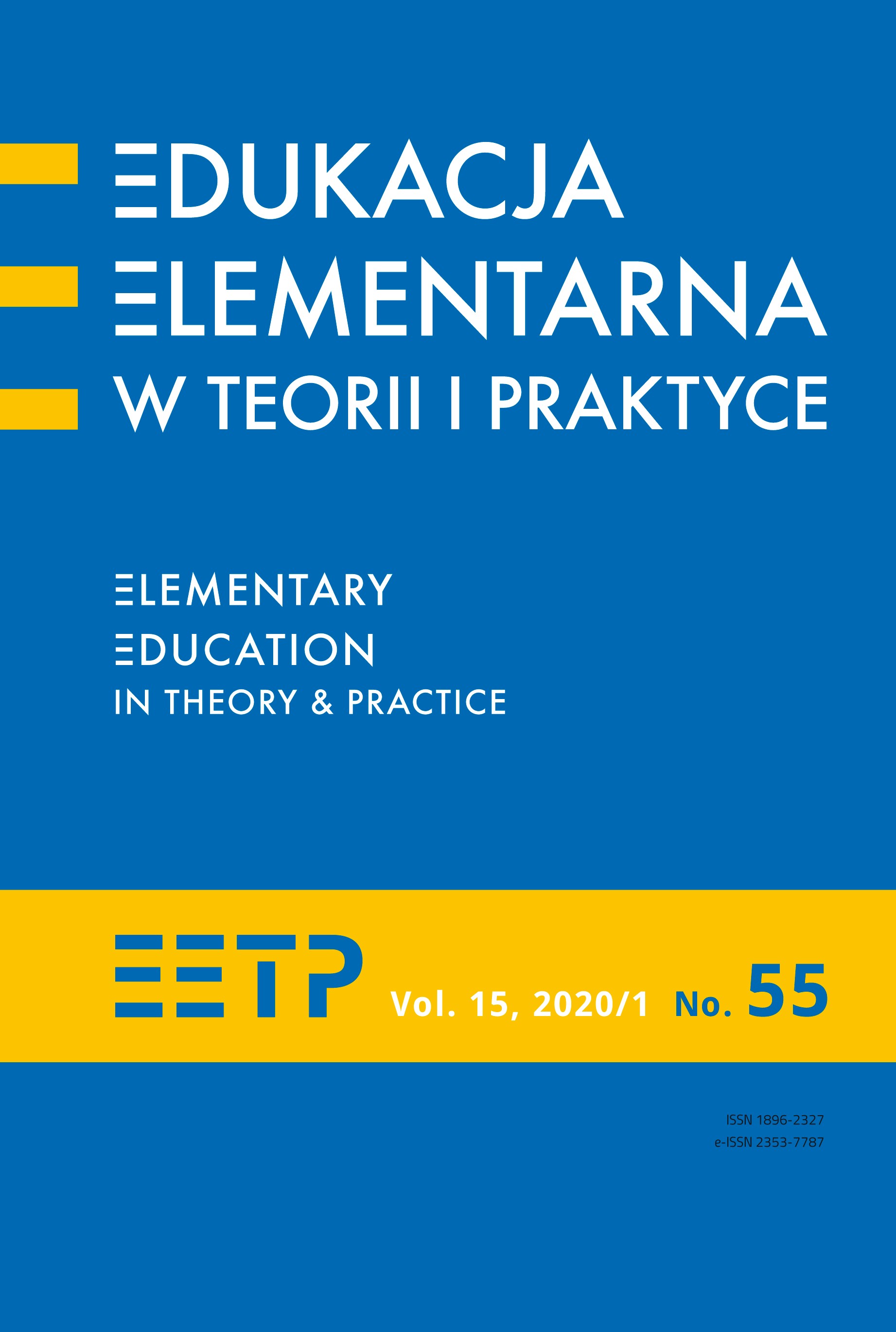Students with Special Educational Needs from the Perspective of Four Decades
Abstract
The aim of the discussion was to show the changes in the perception of students with special educational needs and the organization of their learning process. The empirical research included current difficulties in everyday work with students with special educational needs according to teachers. The research method was a diagnostic survey with a survey technique. The chi-square test was used to analyze the results obtained in terms of the significance of the existing relation. Eighty-three teachers of early school education from public schools took part in the research. The research results have shown current problems in implementing education that meets the requirements of students with special educational needs. The answers obtained indicate that the main problem preventing the correct implementation of individual recommendations is too many students with special educational needs in one group. The analysis of the situation of these students from the perspective of four decades; i. e. since the definition of the concept of special educational needs; as well as the presentation of contemporary problems of school reality; constitute the starting point for a new discussion on introducing changes that will improve the education of students with special educational needs.
References
Bogdanowicz M. (1995). Uczeń o specjalnych potrzebach edukacyjnych; „Psychologia Wychowawcza”; nr 3; s. 216.
Hulek A. (1979). Współczesne kierunki rozwoju pedagogiki specjalnej; [w:] A. Hulek (red.); Współczesne teorie i tendencje wychowania i kształcenia specjalnego; Wrocław: Zakład Narodowy im. Ossolińskich; s. 7-12.
Kierunki zmian w systemie edukacji dzieci i młodzieży o specjalnych potrzebach rozwojowych i edukacyjnych. Małe dziecko o specjalnych potrzebach rozwojowych i edukacyjnych w systemie oświaty. Identyfikacja problemów; propozycje zmian. Zespół Ekspertów MEN ds. Specjalnych Potrzeb Edukacyjnych oraz Poradnictwa. (2009). s. 11. http://radaporadnictwa.webd.pl/pliki/Raport_I_Male_dziecko_30_marca_2009.doc (dostęp: 20.11.2019).
Kostrzewski J. (1979). Wczesna diagnoza potrzeb dzieci z odchyleniami od normy; [w:] A. Hulek (red.); Współczesne teorie i tendencje wychowania i kształcenia specjalnego; Wrocław: Zakład Narodowy im. Ossolińskich; s. 92.
Larecki S. (1979). Stan i potrzeby w zakresie kształcenia pedagogów specjalnych; [w:] A. Hulek (red.); Współczesne teorie i tendencje wychowania i kształcenia specjalnego; Wrocław: Zakład Narodowy im. Ossolińskich; s. 71-73.
Maszke A. (2008). Metody i techniki badań pedagogicznych; Rzeszów: Wydawnictwo Uniwersytetu Rzeszowskiego; s. 14.
Rozporządzenie Ministra Edukacji Narodowej z dnia 30 kwietnia 2013 r. w sprawie zasad udzielania i organizacji pomocy psychologiczno-pedagogicznej w publicznych przedszkolach; szkołach i placówkach (Dz. U. 2013; poz. 532).
Rozporządzenie Ministra Edukacji Narodowej z dnia 9 sierpnia 2017 r. w sprawie zasad organizacji i udzielania pomocy psychologiczno-pedagogicznej w publicznych przedszkolach; szkołach i placówkach (Dz. U. 2017; poz. 1591).
Rozporządzenie Ministra Edukacji Narodowej z dnia 16 sierpnia 2018 r. zmieniające rozporządzenie w sprawie zasad organizacji i udzielania pomocy psychologiczno-pedagogicznej w publicznych przedszkolach; szkołach i placówkach (Dz. U. 2018; poz. 1647).
Rozporządzenie Ministra Edukacji Narodowej z dnia 13 lutego 2019 r. zmieniające rozporządzenie w sprawie zasad organizacji i udzielania pomocy psychologiczno-pedagogicznej w publicznych przedszkolach; szkołach i placówkach (Dz. U. 2019; poz. 323).
Deklaracja z Salamanki oraz wytyczne dla działań w zakresie specjalnych potrzeb edukacyjnych przyjęte przez Światową Konferencję dotyczącą specjalnych potrzeb edukacyjnych: dostęp i jakość; Salamanka; Hiszpania; 7–10 czerwca 1994 r.; UNESCO 1994; https://rownosc.info/media/uploads/deklaracja_z_salamanki.pdf (dostęp: 21.11.2019).
Warnock M. (1978). Special Educational Needs: Report of the Committee of Enquiry into the Education of Handicapped Children and Young People; London: Her Majesty Stationery Office; s. 37-38; 135; 227.
http//www.webarchive.nationalarchives.gov.uk>http>attachments (dostęp: 24.11.2019).
https://cie.men.gov.pl (dostęp: 20.09.2019).
https://stat.gov.pl/cps/rde/xbcr/gus/E_oswiata_i_wychowanie_2012-2013.pdf (dostęp: 20.09.2019).
Copyright (c) 2020 Elementary Education in Theory and Practice

This work is licensed under a Creative Commons Attribution-NoDerivatives 4.0 International License.
- When submitting a text, the author declares that he/she is the Author of the article (hereinafter referred to as the “Work”) and:
- he/she owns the exclusive and unlimited copyright to the Work,
- is entitled to dispose of the copyright to the Work.
Declares that it does not infringe any third party copyrights or legal rights.
Declares that there is no conflict of interest.
2. At the same time, the Author grants the Ignatianum University in Cracowa royalty-free, non-exclusive and territorially unlimited licence to use the Work in the following fields of exploitation:
- recording the Work in a hard copy, as well as on a digital or magnetic medium;
- reproduction of the Work using any technique, without limitation of the number of editions or copies;
- distribution of the Work and its copies on any medium, including marketing, sale, lending, and rental;
- introduction of the Work into a computer memory;
- disseminating the Work in information networks, including in the Internet;
- public performance, exhibition, display, reproduction, broadcasting and re-broadcasting, as well as making the Work available to the public in such a way that everyone can have access to it at a time and place of their own choosing;
- within the scope of dependent rights to the Work, including in particular the right to make necessary changes to the Work resulting from editorial and methodical development, as well as to translate the Work into foreign languages;
The licence is granted from the moment of the transfer of the Work to the Ignatianum University in Cracow. The Ignatianum University in Cracow is entitled to grant further sub-licences to the Work within the scope of the right granted. The licence is time-limited and it is granted for a period of 15 years, starting from the date of its granting.
Authors are permitted and encouraged to publish their text online (e.g. in their institution’s repository or on the institution’s website) before or during the submission process as this may lead to beneficial exchanges, as well as earlier and greater citation of the published text (See The Effect of Open Access). We recommend using any of the following portals of research associations:
- ResearchGate
- SSRN
- Academia.edu
- Selected Works
- Academic Search




